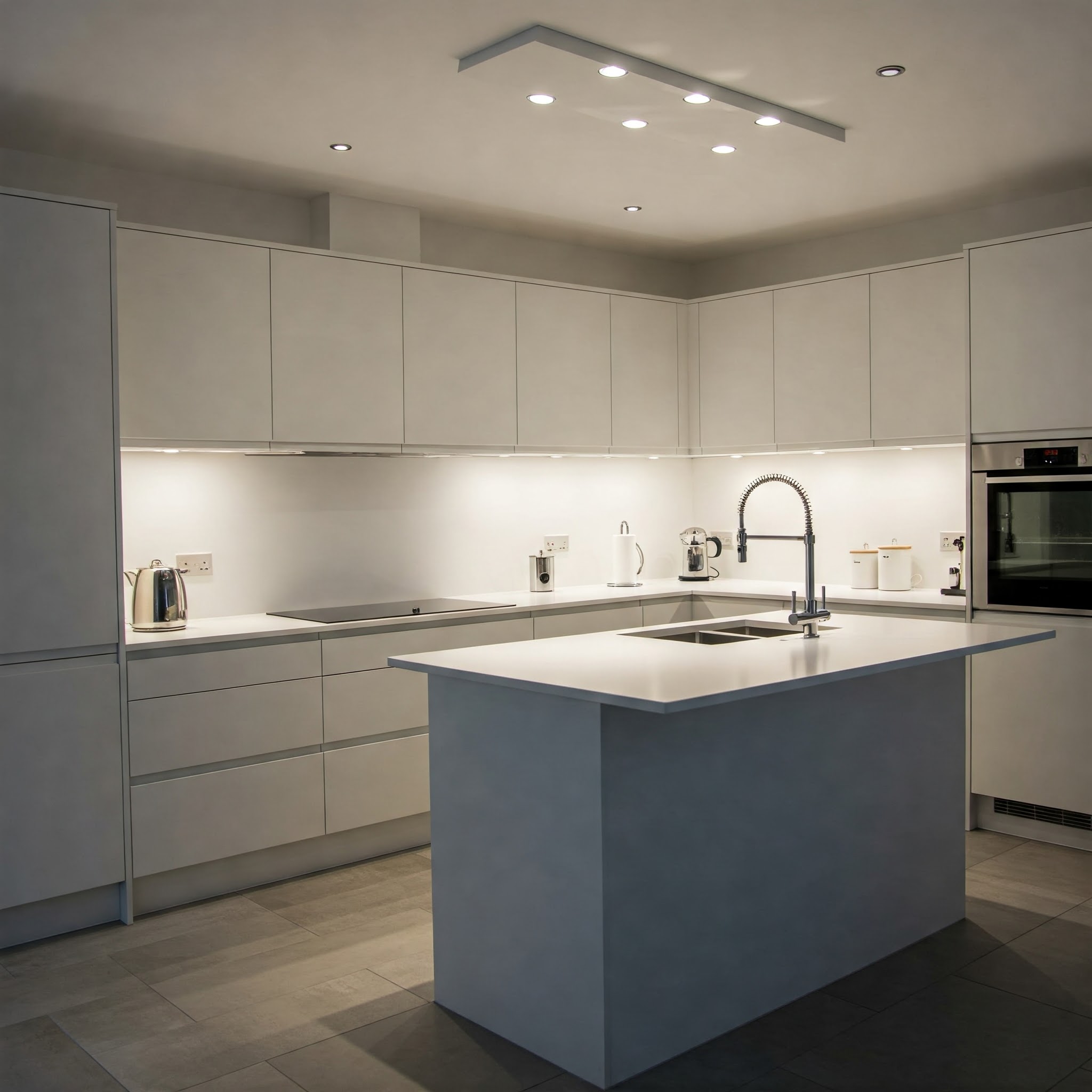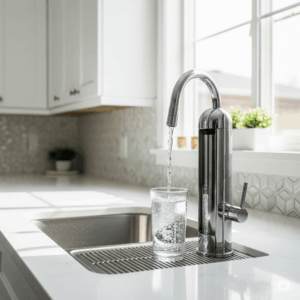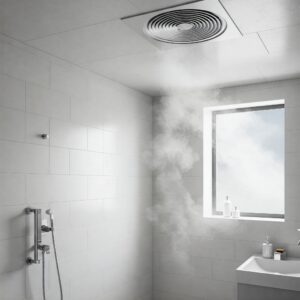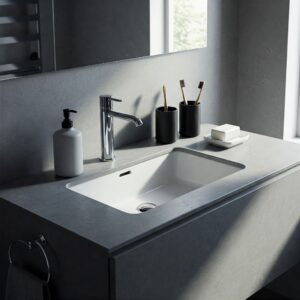Proper lighting is one of the most crucial, yet sometimes overlooked, elements of successful kitchen design. It impacts not only the room’s overall mood and aesthetic but also its safety and functionality. A well-lit kitchen makes tasks like chopping vegetables safer, cooking more precise, and cleaning easier, while also creating a warm and welcoming atmosphere. The key to achieving this is understanding and implementing layered lighting, with the two most essential layers being ambient lighting and task lighting. This guide explains the purpose of each layer and provides practical tips for incorporating them effectively into your kitchen.
Understanding the Layers: Ambient vs. Task Lighting
Thinking about kitchen lighting in layers helps ensure all needs are met – from overall visibility to focused illumination for specific jobs.
Ambient Lighting (General Illumination)
- Purpose: This is the foundational layer, providing the main, overall light level for the entire kitchen. It fills shadows, allows for safe navigation, and sets the general mood. It ensures you can comfortably see inside cabinets and drawers and move around the space without bumping into things.
- Common Fixtures:
- Recessed Lighting (Pot Lights/Can Lights): A very popular choice for modern kitchens, providing even, widespread illumination from the ceiling.
- Flush-Mount or Semi-Flush Mount Ceiling Fixtures: Often used as a central light source in smaller kitchens or supplementing recessed lighting in larger ones.
- Track Lighting: Can provide general illumination when fixtures are aimed broadly.
- Large Pendants/Chandeliers: While often decorative, larger central fixtures can contribute significantly to ambient light levels.
- Placement Tips: Space recessed lights evenly across the ceiling based on room size and ceiling height for consistent coverage. Always consider installing dimmers for ambient lighting to adjust the mood from bright and functional to soft and relaxed.
Task Lighting (Focused Illumination)
- Purpose: This layer provides bright, focused light directly onto specific work surfaces where tasks are performed. Its primary goal is to eliminate shadows (often cast by your own body or upper cabinets) and provide clear visibility for chopping, cooking, reading recipes, and cleaning.
- Common Fixtures:
- Under-Cabinet Lighting: Essential for effective task lighting on countertops. LED strips or puck lights mounted under upper cabinets illuminate the workspace directly below.
- Pendant Lights: Often used over kitchen islands or sinks to provide focused downward light.
- Recessed Lighting (Strategically Placed): Smaller recessed lights positioned directly above key work zones like the sink, main prep counter area, or cooktop can supplement other task lighting.
- Range Hood Lighting: Most range hoods have built-in lights specifically to illuminate the cooktop.
- Placement Tips: Position task lights directly above or slightly in front of the work area they are meant to illuminate to minimize shadows cast by the person working there. Under-cabinet lights should ideally be placed towards the front edge of the cabinet underside.
Achieving Effective Ambient Lighting
Creating a good base layer of ambient light involves:
- Recessed Lighting Layout: Plan the spacing carefully – too far apart creates dark spots, too close can be overly bright. A common guideline is to space them roughly half the ceiling height apart (e.g., 4 feet apart for an 8-foot ceiling), but this varies. Consider beam angle and trim style. Use dimmable LEDs for flexibility and energy efficiency. Choose a suitable color temperature (often 3000K-4000K for kitchens).
- Ceiling Fixtures: Select flush or semi-flush fixtures that complement your kitchen style and provide adequate general light output (lumens) for the room size. Multiple smaller fixtures can sometimes provide more even light than one large central fixture.
- Calculating Needs: While complex calculations exist (lumens per square foot based on activity), a simple approach is to ensure even coverage without dark corners. Consulting a lighting designer can be beneficial for complex spaces.
Implementing Effective Task Lighting
This layer requires careful placement for maximum benefit:
- Under-Cabinet Lighting: This is non-negotiable for countertop task areas under upper cabinets. LED strips provide even light distribution, while puck lights offer focused pools. Choose a color temperature similar to your ambient lighting for consistency. Ensure they are positioned correctly (towards the front) to light the counter, not just the backsplash.
- Pendant Lights: When used over islands or peninsulas, hang them at a height that illuminates the surface without obstructing views across the kitchen (typically 30-36 inches above the countertop). Choose the number and size appropriate for the island’s length. For sinks, a single pendant or recessed light works well.
- Range Hood Lighting: Ensure your range hood has bright, effective built-in lighting directed onto the cooktop surface.
- Sink Lighting: A dedicated recessed light or pendant centered over the sink ensures good visibility for washing dishes and food prep.
Integrating Task and Ambient Lighting
The magic happens when these layers work together:
- Foundation and Focus: Ambient light provides the comfortable base illumination, while task lighting adds the necessary brightness for specific work zones.
- Separate Controls: Use separate switches (and ideally dimmers) for each layer (e.g., one switch for recessed ambient lights, another for under-cabinet task lights, another for island pendants). This allows you to tailor the lighting to the activity – full brightness for cooking, softer ambient light for dining or relaxing.
- Dimmers are Key: Installing dimmers on both ambient and task lighting circuits offers the ultimate flexibility in controlling brightness and mood.
(Optional) Accent Lighting
While task and ambient are essential, a third layer, accent lighting, can add depth and visual interest. This includes things like lights inside glass-front cabinets, toe-kick lighting, or spotlights highlighting artwork or architectural features. It builds upon the foundation set by ambient and task layers.
Conclusion
A well-designed kitchen lighting plan is fundamental to creating a space that is both beautiful and practical. By understanding and implementing the principles of layered lighting – establishing a comfortable base with ambient illumination and adding focused brightness with task lighting over key work areas – you can significantly enhance your kitchen’s functionality, safety, and overall atmosphere. Careful planning of fixture types, placement, and controls like dimmers will ensure your kitchen is perfectly lit for every activity, from intricate meal prep to relaxed evening gatherings.







Leave a Comment